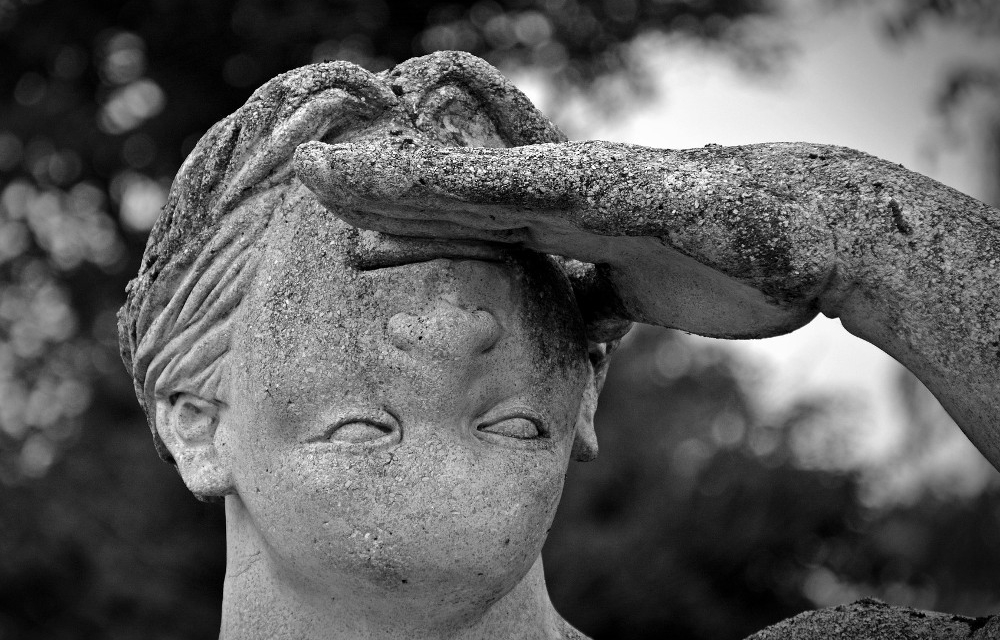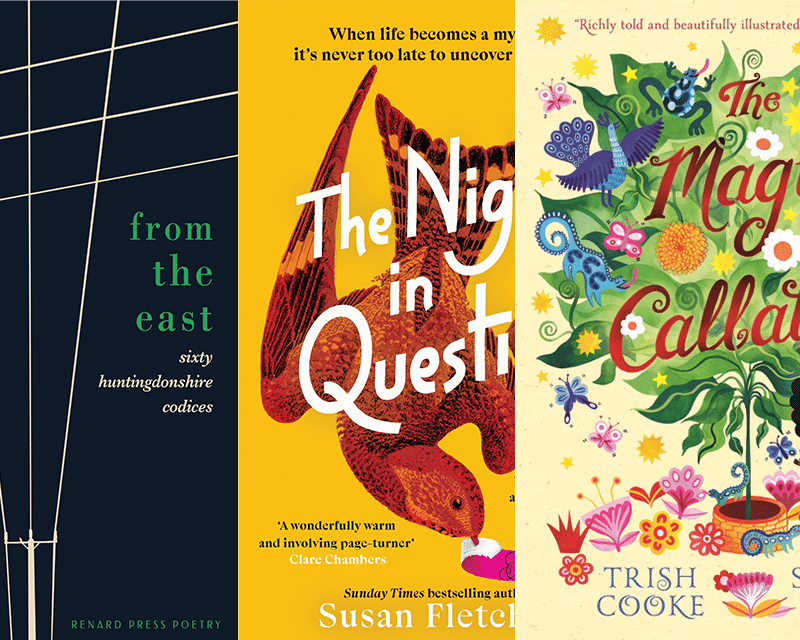- Collected
- Article
Based On A True Story
The challenge of turning ‘true life’ into biography, film or television.

- 21 January, 2019
- Deborah Chancellor
I am fascinated by the process of writing about real events and the people who lived through them. The reason we write about historical characters is because they usually have an interesting story to tell. So how does a writer draft a ‘true story’ without distorting it for narrative reasons? How far does the art of turning ‘true life’ into biography lead to a dilution of the facts, or a manipulation of what really happened to suit the writer’s perspective on that period of history?
In recent years, TV production companies have made big bucks by fictionalising history. Netflix’s The Crown is a sumptuous and credible account of the reign of Queen Elizabeth II, enjoyed by millions worldwide. But how far does it stray from the truth of the story for dramatic effect? The same question can no doubt be asked of any historical drama ever written. In the case of The Crown, the full answer is probably only known by the Queen herself, but we can safely assume a large slice of dramatic licence was taken by the writers.
People read books and watch TV for entertainment; biographies and biopics must attract and keep our attention. This is where misinformation or distortion of facts often creeps in. FX’s Trust, a ten-part TV series that dramatizes the kidnapping of John Paul Getty III, is ‘based on a true story’, yet the Getty family have disputed this version of events. After watching the series, I was intrigued by the story and keen to discover how much of what I had seen was true. The internet helped me out a little here, but of course you can’t always believe what you read online. I am still unclear exactly how much of this adaptation of the story I should dismiss as interesting, but inaccurate,probably a fair amount.
Some writers make deliberate play on the notion of truth. The creator of the TV series Fargo, Noah Hawley, begins each episode with the claim that ‘This is a true story’. Yet the stories in each of the three seasons are entirely fabricated. The Coen brothers, who wrote the 1996 film which inspired Hawley’s TV series, initially claimed it was based on a true story. But in a subsequent interview with the Huffington Post, Ethan Coen admitted this was just a pretence: ‘You don’t have to have a true story to make a true story movie.’ His drama is intensified by the suggestion of truth and the viewer is happy to be misled by this.
Essentially, most people are gullible, and some, chronically so. Even when a TV drama is pure invention and does not claim to be true in any respect, many viewers are still unable to distinguish fact from fiction. This was illustrated, rather amusingly, by the recent spike of applications for jobs in Personal Protection, during the run of the BBC hit-drama Bodyguard. Hopeful applicants were convinced that the life of a ministerial bodyguard was as exciting as that depicted in the TV series — unaware of the degree of creative imagination that had been deployed. Here, fiction bore absolutely no relation to fact.
In an age of ‘fake news’, there is now an understandable preoccupation with truth. Events happen and are clearly documented, but the fact that they took place at all is still questioned. Conversely, things that don’t even happen are publicised across the web and then regarded by many as fact. We live in confusing times, and writers have a responsibility to help shine a spotlight on the truth. All writers should have a ‘truth filter’, and some will allow more inaccuracies through this filter than others. Biographers should have the finest filters of all; if we want to learn about the life of a famous person, we should after all expect to be able to read an accurate account. But this is not always easy for a biographer; awkward, mundane truth can get in the way of a good story. There is a temptation to embellish or edit, to reveal the subject in a particular light. The biographer’s view of the subject can sometimes affect the selection and presentation of the research material.
As a writer for children, I know this to be true from personal experience. I have written many children’s non-fiction books, amongst them two biographies. The first focused on militant suffragette Emily Wilding Davison (The Perfect Rebel, Barrington Stoke, 2010) and the second dealt with African-American abolitionist Harriet Tubman (Real Lives: Harriet Tubman, A&C Black, 2013). But already I am questioning myself. I have just classified my biographies as ‘non-fiction’, but they are in fact presented and promoted as stories.
In writing both titles, I wanted to provide children with a good read, which inevitably required a degree of dramatization and dialogue (based on research, and in line with documented events, but imagined nonetheless). Both books required a carefully constructed narrative arc to draw in the reader and sustain their interest. This meant arranging material in a particular order, perhaps emphasising certain events over others, which probably gave a distorted impression of the facts. So however closely I tried as a biographer to keep to the truth, the act of structuring, writing and editing my material inevitably distanced me from the reality of what really happened to both these remarkable women. This was regrettable, but perhaps unavoidable.
My account of Harriet Tubman’s extraordinary life begins with a flashback to the West African rainforest, as Harriet’s grandmother, still a child, is taken away from her family by a band of slave catchers. I needed to begin my biography by explaining Harriet’s Ashanti heritage; to grab the young reader’s attention from the start, I made the decision to dramatize this scene, and the horrific journey on the transatlantic slave ship that followed. There were good narrative reasons for this choice, but despite copious research, I felt that I was merely painting an impressionistic picture of this event; nobody knows for sure the exact details of what happened to Modesty, Harriet’s maternal grandmother, at this key turning point in her life.
What I wrote was based on the terrible truth of what happened to countless West Africans, but it is nevertheless a fictionalised account of Modesty’s experience. As such, I may well be guilty of distorting the truth of her individual story for narrative purposes. As I continued writing Harriet’s story, it was often necessary to include dialogue to support dramatic events; with a limited word-count, I also had to select which events to put in and which to leave out. Editorial selection and invented dialogue no doubt moved me further away from a strictly truthful representation of the facts.
It is practically impossible for biographers to avoid taking a stance on their subjects. The more research you do, the stronger an opinion you form, whether it be respect, admiration or perhaps a more negative reaction. When I was researching the life of Emily Wilding Davison, I realised I couldn’t write her incredible story without taking a side in the debate over whether she intended to kill herself when she fell under the King’s horse at the Epsom Derby in 1913. Having done extensive research and looked at available evidence, I came to believe it was a terrible accident — Davison had previously practised lassoing horses with suffragette flags, had bought a return train ticket to Epsom that fateful day, and had not said goodbye to her beloved mother. The position I took on Wilding’s intentions affected how I wrote that tragic scene — it would have been possible to depict it very differently, had I come to another conclusion about her final actions.
But perhaps I was wrong — the truth about the famous suffragette ‘martyr’ may never be known for sure. We have to remember that all stories, whether ‘true stories’, ‘pure fiction,’ or something in-between, are written by human beings, and are therefore not perfect. They will contain the writer’s bias towards or against the subject. They will either include or reject aspects of the story, so that a particular stance can be taken over what the subject did (or didn’t) do. No writer can ever achieve pure, one hundred per cent truth — perhaps truth could be described as a spectrum, and all writing can be positioned somewhere on that scale. Biography often claims to be at the upper end, but close analysis may contradict this. So, readers must always be on their guard. History can be told, but in my case and probably for most writers, the more entertaining the story, the less truthful it may become.
You might also like:
No facts, only versions
Memoirs are as much about what is excluded as what is included. This edition examines how you can evoke the…
RLF Fellows’ News: April 2024
Publishing News RLF Fellow Trish Cooke’s new children’s book, The Magic Callaloo, is set to be published by Walker Books…
Susan Fletcher on outsiders in fiction – literal and imagined
I’ve always known that I’ve preferred to be outside. To be an outsider – literally, and, specifically, amongst wild places…


